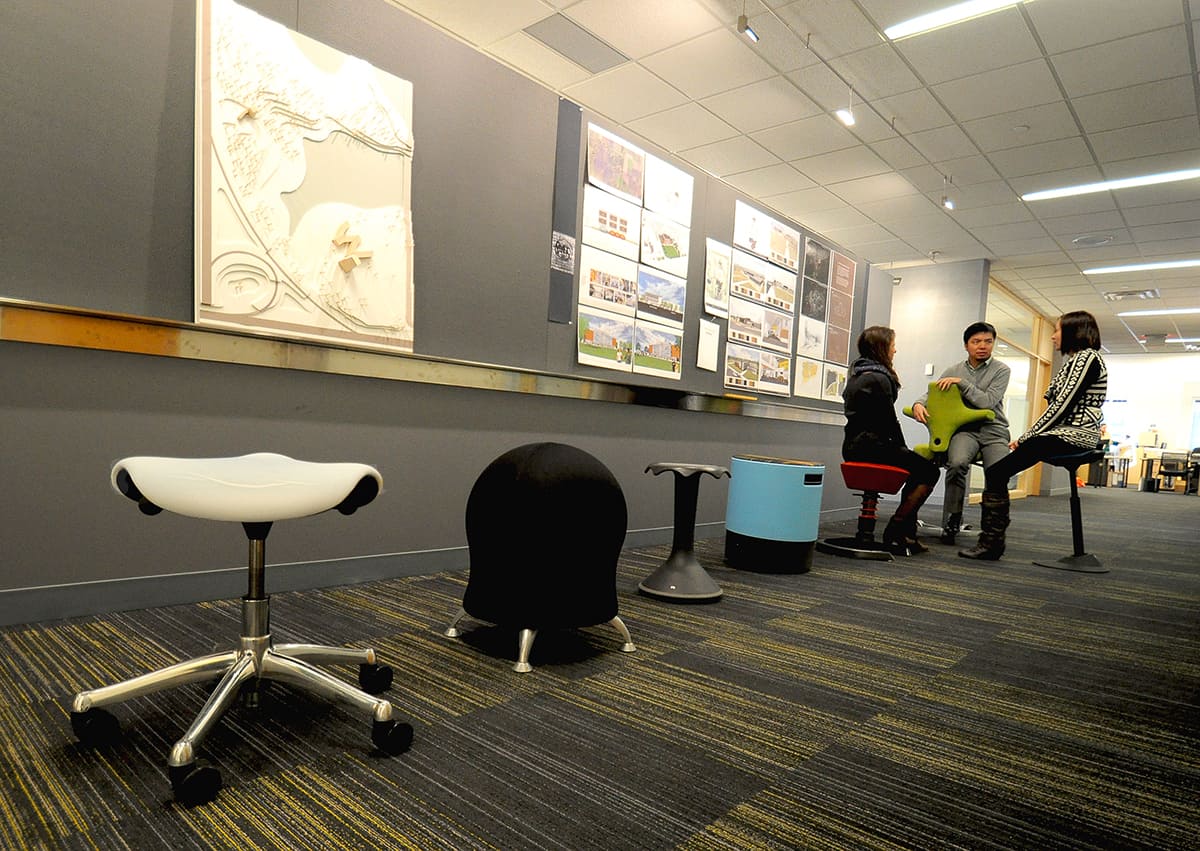A stability ball. The large, round, rather bouncy spheres are more than ubiquitous in fitness centers and health clubs. For anyone who participates in group exercise, the balls look right at home in studios and on fitness floors.
But, would a stability ball look as natural behind the desk?
As health and wellness moves from hospitals and health clubs into the office, people are seeking alternatives to the repetitive and sedentary activities that can define their work day and lead to modern-day maladies caused from long periods of sitting, such as back and shoulder pain. Even the idea of strengthening abdominal muscles is enticing employees to try new seats and desk chairs.
In our office, a coworker traded in her chair for a stability ball in an effort to ease her back pain from sitting at a desk eight hours a day. The result – she loves it! And while the stability ball breaks from the uniformity of the furniture found throughout the office, there is little argument for improving not only the comfort of the employee but also her health.
With the concept of active seating, abdominal muscles are strengthened and less pressure is put on the spine. The pursuit of the active seat has led to creative and, in some cases, rather radical designs. With a growing selection of active seating products available, the question employees and office managers may now have is which one is right for you? It turns out that it depends as much on the situation as on the individual.
We collected a handful of options and put them to the test. Here’s what our product testers had to say:
Best Alternative to Traditional Desk Chair
Humanscale’s Freedom Saddle Stool was our only test chair that made it past our long-term sit test and was the only chair that was recommended as an alternative to the desk chair. The casters allow for ease of movement, the saddle seat is comfortable enough to sit in for long periods to time. Its height adjustable and ergonomic qualities enhance posture. Majority of testers preferred this chair to their normal desk chair.
Best Collaborative Side Seating
The Steelcase Buoy chair was our winner for collaborative side chair. Its lightweight design (complete with handle) is made to move around and support collaborative behavior. Its 360-degree swivel and height adjustability is very intuitive and moves with your body. Plus it’s small enough to tuck under a desk when not in use.
Best Sit to Stand
Standing meetings are becoming very popular. The Via Muvman is a great sit to stand option. The user perches or leans on the seat to use. Although it’s too tall for use at a normal workstation, it supports a wide range of motion and has a handle for easy transport.
Best “Active” Seating
If movement is the goal, then the Via Swopper was the best “active” seating option. With 360-degree swivel and spring bounce, the chair looks as fun as it is. It has multiple adjustments, although some of our testers found it too tall.
Whether you’re trying to ease an achy back or be more active at work, there are many options to choose from. Just be sure to test chairs thoroughly to ensure you have the right height, maneuverability and comfort.
A version of this column originally appeared in The Business Journal’s How-To section of its newspapers’ website in January 2014 as part of an occassional series about design written by Jennifer Stukenberg.


